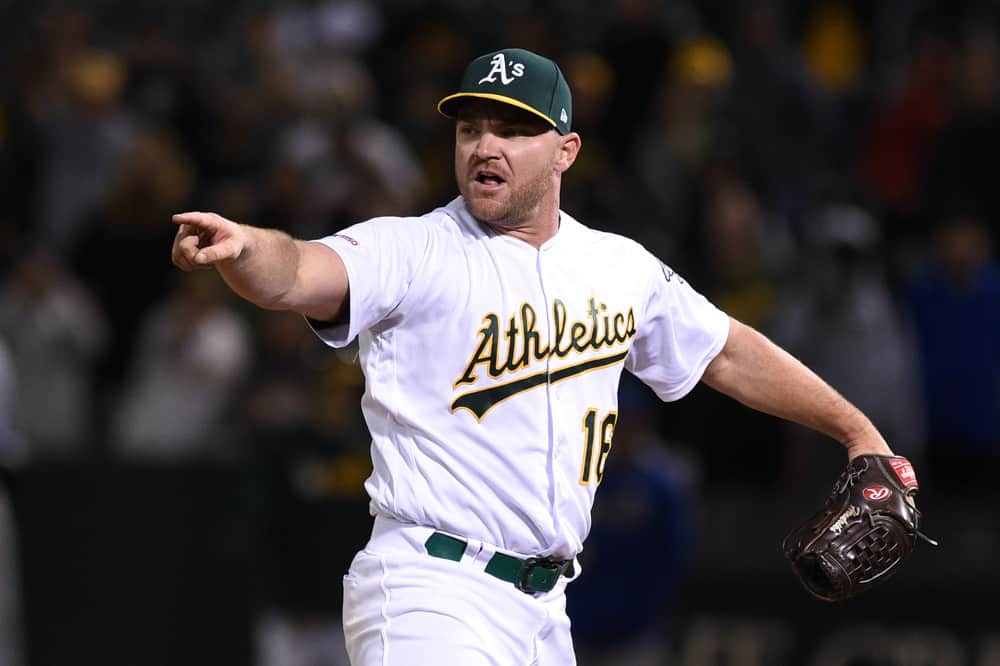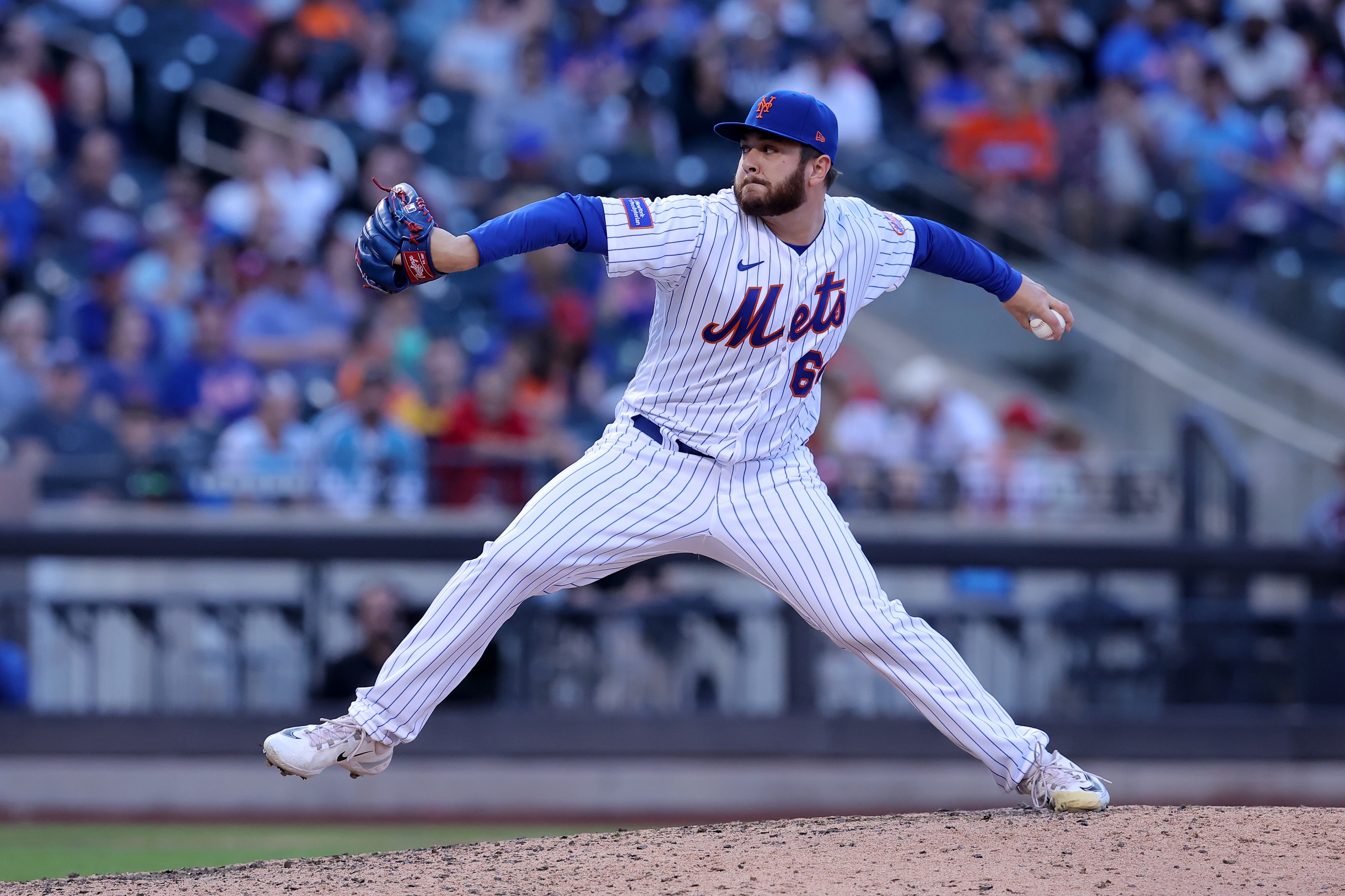The last time the White Sox gave a four-year contract to a free-agent closer, one could make the case that it was necessary.
In 2014, a fairly entertaining 73-win White Sox team was hampered a bullpen that struggled to hold late-inning leads. They went a league-worst 61-7 in games they led in the ninth inning, so they made a point to land David Robertson, the only top-of-market acquisition over the first winter Rick Hahn won.
The Sox signed Robertson away from the Yankees for four years and $46 million, and Robertson helped where they'd hurt. The Sox improved to 63-3 with ninth-inning leads the following year. That doesn't mean Robertson was worth three wins by himself, but the closer situation felt like a three-win improvement over the one that Jake Petricka won by attrition the previous season.
The bigger problem was the number in the win column. Thanks to the league's worst offense, the White Sox entered the next season with fewer ninth-inning leads than the season before, which is a number Robertson can only indirectly impact. They went from winning the winter to winning only three more games. Robertson, Jeff Samardzija and Zach Duke all offered some assistance on the pitching side, even if all failed to individually electrify. It's just that none could bail out an offense that scored only 622 runs on the season.
Meanwhile, the Yankees looked no worse for the wear, even though Robertston helped them go 69-2 with ninth-inning leads in 2014. They let him go and received a draft pick for the loss, signed Andrew Miller for a slightly less onerous four-year deal ($36 million), then went 81-0 with ninth-inning leads the following year.
* * * * * * * * *
That's where my thinking starts when ruminating the idea of the White Sox signing Liam Hendriks, who is also the top-of-market closer this year, and whose representation is also working hard for a four-year deal. The White Sox have been tied to Hendriks throughout the month by rumormongers both of the established and anonymous varieties.
Here's Bob Nightengale last week:
They still need to find a closer if they don’t re-sign Alex Colome, and have their sight set on Liam Hendriks. He would be an ideal fit for the White Sox, yielding a 1.79 ERA the past two seasons, striking out 161 batters over 110.1 innings.
And here's Jeff Passan with an update on Monday:
The Chicago White Sox have been linked to Hendriks as his primary suitor, but a number of other teams in search of a closer -- or simply more bullpen help -- are prepared to pounce.
Among the teams that have pursued the 32-year-old: the Los Angeles Dodgers, Houston Astros, New York Mets and Toronto Blue Jays.
Robertson ultimately made no difference for the White Sox, because the quality of closer only matters on a team that wins more games than it loses, and the White Sox were on the wrong side of .500 for each of Robertson's four teams. His trade value also didn't help, because Blake Rutherford is the last man standing from the four-player package the White Sox received from the Yankees for Robertson, Todd Frazier and Tommy Kahnle, the last of whom had the most future value.
The 2015 White Sox have limited use as a comparison to the 2021 team in the sense of overall quality. Hahn is building on a team that went 35-25, not 73-89. His offense scored the second-most runs in the American League, rather than the median total. Hahn's correct when he said about the Lance Lynn trade that "marginal wins matter" now, and protecting the highest number of late-inning leads is a good place to capture wasted efforts. The bulletproof bullpen is how the Royals peaked with consecutive AL pennants, and how the Orioles beat projections during the best of the Buck Showalter era.
The problem is that late-inning leads were not an issue for the White Sox of the last two seasons. There's no doubt that Hendriks is a better pitcher than Alex Colomé when looking at their work over that time:
| Pitcher | G | IP | H | HR | BB | K | ERA | FIP |
| Colomé | 83 | 83.1 | 55 | 7 | 31 | 71 | 2.27 | 3.78 |
| Hendriks | 99 | 110.1 | 75 | 6 | 24 | 161 | 1.79 | 1.70 |
But in terms of their jobs, there's no difference. Colomé converted 42 of 46 save opportunities over his two years with the White Sox. In two of the saves he blew, he recorded more than three outs and picked up a win for the troubles. It's hard for any closer to fare better with the chief task at hand.
Even Hendriks didn't. After taking over as Oakland's closer during the second half of the 2019 season, he went 39-for-46 in save situations.
That's still not to say that Colomé is a better closer than Hendriks. That is to say that the White Sox have done a better job with ninth-inning leads than any team in the American League over the last two seasons, so Hendriks will be hard-pressed to maintain the recent standards no matter his dominance.
| Team | W-L | WP% |
|---|---|---|
| WHITE SOX | 92-1 | 98.92 |
| Yankees | 111-2 | 98.23 |
| Angels | 85-2 | 97.70 |
| Rays | 112-3 | 97.39 |
| Indians | 110-3 | 97.35 |
| Twins | 120-4 | 96.77 |
| Rangers | 86-3 | 96.63 |
| Athletics | 109-4 | 96.46 |
| Royals | 76-3 | 96.20 |
| Blue Jays | 81-4 | 95.29 |
| Astros | 117-6 | 95.12 |
| Mariners | 76-4 | 95.00 |
| Tigers | 53-3 | 94.64 |
| Red Sox | 88-5 | 94.62 |
| Orioles | 72-8 | 90.00 |
* * * * * * * * *
For anybody wanting to make a case for Hendriks, you have to set aside the ninth inning. The chart above shows there's little variance among most teams with ninth-inning leads, and that was especially the case in the shortened 2020 season, where only two teams lost more than one game. The Blue Jays went 24-2, and the Astros botched four in just 25 opportunities, which is why Jeff Passan is linking them to Hendriks.
The better case for Hendriks is what he can do for the bullpen's big picture in high leverage situations. Both the White Sox (32-0) and A's (24-0) were undefeated with ninth-inning leads in 2020. Hell, the Indians were in between them at 28-0, but that didn't stop them from releasing Brad Hand, rather than paying their closer a previously reasonable net amount of $9 million for his option (he was in line for a $10 million salary, but Cleveland had to pay his $1 million buyout).
The separation comes innings earlier:
| Leading after | White Sox | Indians | Athletics |
|---|---|---|---|
| Seventh | 27-3 | 28-2 | 25-0 |
| Eighth | 30-2 | 28-2 | 24-0 |
| Ninth | 32-0 | 28-0 | 24-0 |
Perhaps the White Sox could promote Codi Heuer to the closer role, and he could be just as successful as a more proven option for a fraction of the price. Were that to happen, I wouldn't question whether Heuer has the mettle for the last three outs, but whether the Sox have the depth to compensate for his absence in earlier innings.
And they might! When healthy, Aaron Bummer and Garrett Crochet are as tough as it gets from the left side, and it'd be hard to ask for more from Evan Marshall the last two years, or Matt Foster in his rookie season. If Tyler Johnson or Zack Burdi can finish the development on their sliders at the highest level, depth shouldn't be a problem. It'd be nice to add a right-hander with a track record, but he wouldn't necessarily have to come at Hendriks' cost.
Health just happens to be a sizable caveat. Four of those six players spent time on the injured list the last two years, and Game 3 of the wild card series pivoted toward disaster on Crochet departing with forearm issues. That adds a little more urgency to the idea of reinforcing the bullpen.
So what about cost? Again, Hendriks seems like overkill at a four-year commitment, but here's where Hahn's ugly free agent track record looms over the proceedings. In each of the last two winters, Hahn has tried to introduce one of those proven righties to add bulk to Rick Renteria's medium- and high-leverage options, and both were disasters. Kelvin Herrera came to the White Sox on a two-year, $18 million deal after the 2018 season. He posted a 6.54 ERA over his White Sox career, which ended early in the 2020 season when every appearance only made him come closer to his vesting option.
The White Sox made a similar, less costly move in signing Steve Cishek for one year and $6 million, but he too was designated for assignment before the end of his contract after delivering the exact opposite of his profile.
The Sox's issues with the bullpen are the same as the rest of the roster, in that they struggle solving problems with free agents unless they spend a problem-solving amount of money on free agents. Hendriks would require that kind of investment, which at least gives increased assurance that he'd give the White Sox something over his time on the South Side.
I still don't think Hendriks is necessary, at least at the expense of upgrades at DH or starter depth. The White Sox aren't a year away from contending, but they are a year away from being rock-solid in their projectability, so I'd rather see those kind of resources directed to their most acute pain points. Lynn is great because he addresses the issues with rotation depth and innings. Adam Eaton doesn't quite do the same for right field, or their issues hitting right-handed pitching, due to his injury history.
If the White Sox's problem-solving money is limited, I'd rather use it to solve the active problems, rather than speculative sore spots. Just like clutch-hitting woes can be offset by increasing the number of scoring chances, any potential issues stemming from the lack of a name-brand closer can be first softened by generating more leads, then revisited at the trade deadline.
(Photo by Cody Glenn/Icon Sportswire)






